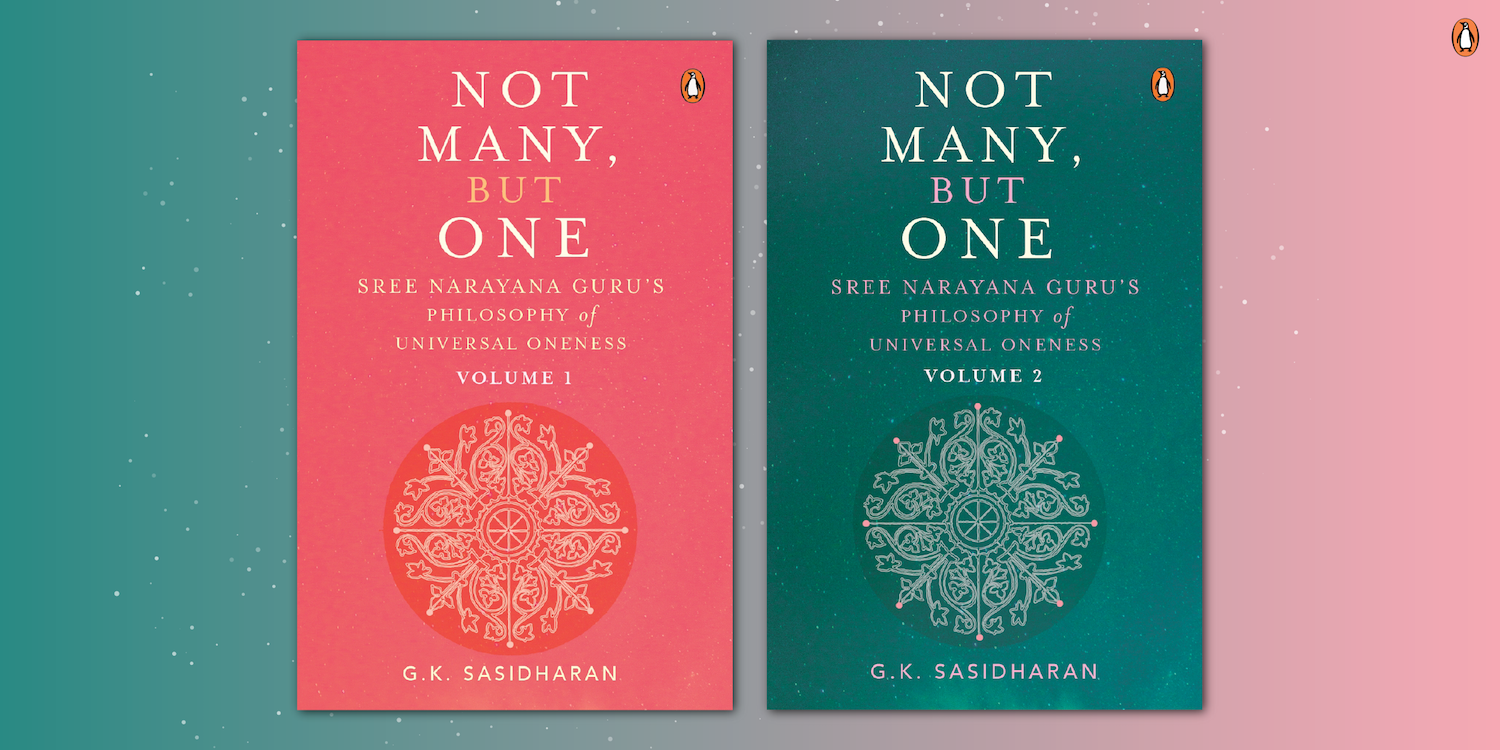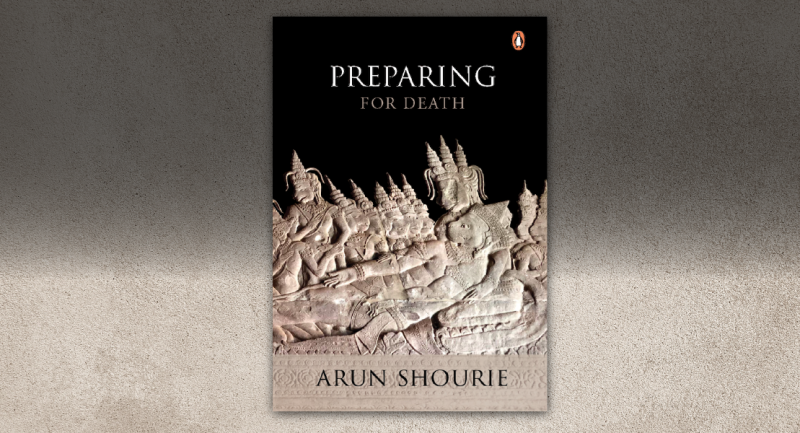
Not Many, But One combines knowledge from Sree Narayana Guru’s Advaita philosophy and the latest findings of modern physics, astrophysics and life sciences to tackle some fundamental scientific and philosophical issues. Here is an excerpt from the second volume, which explores how Sree Narayana Guru revived the Advaita philosophy.
~
In India, religion and spirituality are used very often as synonyms. While religion is more to do with rituals, spirituality has more to do with one’s self or, the spirit. In India, spirituality and religion are inherent parts of the day-to-day living of people in all walks of life. In India, people belonging to all the major religions of the world coexist in harmony for centuries. We begin with Hinduism since it is the dominant religion in the subcontinent.

For the study of Indian spirituality, it is essential to understand the basic tenets of Hinduism, a rich, complex and deeply symbolic religion. Hinduism is otherwise known as sanatana Dharma, or the eternal truth/tradition/religion. the Vedas are considered as superhuman-divine revelations, revealed to sages and seers in higher states of communion with ‘the one’—the Absolute. the Vedas are believed to be the world’s most ancient scriptures.
The Absolute is understood in three ways: one, as Paramatma or nirguna (unattributed) Brahman (the unattributed, all-pervading aspect of the supreme); two, as saguna (attributed) Brahman (the supreme soul as the aspect of God within the heart of all beings); and three, as Parameswara, the Absolute in the Jagrat or visual feature.
The entire universe is an illusion, a Vivartha (reflected image) of the absolute reality. the absolute reality can be seen only by turning inward as if it is you or inside you. the Indian philosophy differentiates between ‘belief’ and ‘faith’. A belief may or can be true, whereas faith can never be so; though faith is very often used to mean acceptance. For example, in earlier times, the earth was believed to be flat (belief). now, we know precisely that the earth is spherical (faith). According to Hinduism, experience is the key to faith.
The mother, father and the guru are akin to God. Ahimsa or non-violence to all forms of life is a basic principle. nothing is considered bad so long as it is within limits and the body accepts it. Hinduism believes in the following aspects: An absolute ‘one’, all-pervading supreme being both immanent and transcendent, the creator of un-manifest reality, though it is the only ‘Reality’.
According to Karma, the law of cause and effect, each individual creates his own destiny by his thoughts, words and deeds. Karma is not fate; for man, his deeds create his own fate. God does not punish anyone; one reaps what he sows. the effect of his acts makes him take several births until all the debts of his deeds—good and bad—are returned. still, prayer and nobility give Divine Grace. Man is not a born sinner. Divine grace is equal for all. Hindu philosophy believes in equality of well-being for all— Lōkā Samasta Sukhinō Bhavantu.
Reincarnation (where the soul evolves through many births) continues until all Karma is resolved. then only one attains Moksha or liberation from the cycle of rebirth. this destiny is common for all souls—the existence of divine beings in unseen worlds, temple worship, rituals and devotion lead to communion with the ‘Devas’ or gods in other worlds.

The history of spirituality and religion in India extends back to the end of the Palaeolithic period. this is evidenced by early traces of it excavated from different parts of India. there is evidence of ‘fire worship’ and ‘mother goddess’ worship as early as 10,000 BCe to 30,000 BCe. In Baghor situated near Kaimor escarpment Medhauli village in Madhya Pradesh, the excavated triangular stones and altars of fire worship seem to be 30,000 years old. A triangular stone was found incised with triangles, marked in red ochre, at an altar for a goddess. even today this practice continues in many villages in India, where similar stones, smeared in red and incised with triangles are offered to village deities. the triangular shape is generally taken as the basis for creating yantras, which are used for the worship of various deities. In the Indus Valley civilization (Harappan civilization) Kalibangan proto-Harappan age (3500 BCe–2500 BCe), they practised worship of the mother goddess, phallic worship and worship of a male god.
The new ideas of spirituality built up through the last couple of centuries, combining Western materialistic ideas with mystical traditions of Asia; especially of Indian religions. the ultimate endeavour was to find the truth of the individual’s entity ‘I’. With the advent of translations of Hindu texts in the West, mostly during the last century, transcendentalist thoughts started influencing Western thought, which led to the endorsement of universalist ideas and to Unitarian Universalism.
The theosophical society that searched for sacred teachings in Asian religions contributed to the major influence on model spirituality. It was influential on several Asian religions, especially on neo-Vedanta, the revival of theravada Buddhism, and Buddhist modernism, which adopted modern Western notions of personal experience and Universalism and incorporated them in their religious perception.
The perpetual philosophy of Asian tradition furthered the influence on the Western model of spirituality. An important influence on Western spirituality was neo-Vedanta, also called neo-Hinduism and Hindu Universalism, a model interpretation of Hinduism which developed in response to Western thoughts and oriental thoughts. the Unitarianism and the idea of Universalism were brought to India by missionaries and had a major influence on neo-Hinduism. this universalism was further popularized and brought back to the West as neo-Vedanta by swami Vivekananda.
~
The translations, explanations and commentary given in the two volumes of Not Many, But One are simple and conceivable by ordinary readers who may not be well equipped to grasp the complexities of the intuitional spiritual findings of Advaita and hypothetic conclusions of quantum physics-but without compromising on the authenticity of the works.









